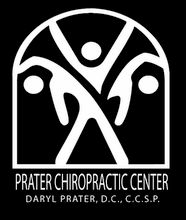
One of the most common training errors runners make is training too hard or too long on recovery days. Recovery is just as important a component of training as your workouts and it is when most of the improvements occur. Recovery “rest” and/or “cross training” days are built into your Beyond training schedules and follow the hard/easy rule. A hard workout such as your long run or Lactate Threshold runs are usually followed by an easy day, and a day of rest or cross training. The only exception is the Wednesday night 2nd long run; it is a longer distance workout, but one that should be done at an easy pace.
What exactly constitutes a recovery day? It varies from person to person depending on their physiology, age, predisposition to injury, fitness level and other factors. For some it means a complete day of rest, for others a day of cross training, and for others a day of “easy” running that is shorter in distance and lower in intensity than your “hard” or “quality” days.
If you train too hard on a scheduled recovery day, you will be tired for your next quality workout and it won’t go as well as planned. This can often lead to a vicious cycle, and the tendency is to run hard the next scheduled recovery day to make up for the lackluster “hard” day. This results in a decline in performance in racing times and in your quality workouts. Just as it takes discipline to push through a 20 miler or a taxing VO2 max or Lactate Threshold session, it also takes discipline to back off and run slow the day or two following a hard session.
If you train too hard on a scheduled recovery day, you will be tired for your next quality workout and it won’t go as well as planned. This can often lead to a vicious cycle, and the tendency is to run hard the next scheduled recovery day to make up for the lackluster “hard” day. This results in a decline in performance in racing times and in your quality workouts. Just as it takes discipline to push through a 20 miler or a taxing VO2 max or Lactate Threshold session, it also takes discipline to back off and run slow the day or two following a hard session.
If you train too long during recovery days, particularly when you start adding higher intensity workouts such as lactate threshold or VO2Max sessions, it will also compromise your training. Too many slow miles on your recovery days will leave you fatigued during your hard days, and will impede your overall progress.
On recovery days, it helps to minimize the pounding on your legs and reduce the stress to your muscles and nervous system. Running on soft surfaces during recovery days will help reduce the cumulative impact your legs and back experience over the course of the week. Since you are doing your recovery days on the days your muscles are least resilient, it makes sense to reduce the impact. It is also recommended that you avoid hilly courses on recovery days….running uphill requires more effort and running downhill increases muscle damage, which is exactly the opposite of what you are trying to accomplish.
For some folks, or after certain workouts (feeling beat up after that hilly 18-miler last Saturday), not running at all, but cross training on the elliptical, spinning, water running or swimming may provide the ideal recovery day! In these workouts, you enhance your recovery by increasing blood flow, but there is no additional pounding. For others, or after certain workouts, a complete day of rest may be necessary. I always build one day of complete rest into my training schedule, and one day of cross training in the pool swimming or water running.
For those who use a heart rate monitor to train, the device can be a great tool in preventing yourself from training too hard on recovery days. You should keep your heart rate below 75 percent of your maximal heart rate. For example, if your maximal heart rate is 185 beats per minute, you will want to keep it below 139 beats per minute during your recovery workout.
Another good rule of thumb for recovery days is to run them 2 minutes slower than your 10-mile or Half Marathon pace. For example, if your half marathon pace is 8 minutes per mile, run you recovery run at 10 minute per mile pace! Take it easy, enjoy a chat with a training partner and rejuvenate!
Pfitzinger, P., and S. Douglas. 2001. Advanced Marathoning. Champaign, IL: Human Kinetics.





